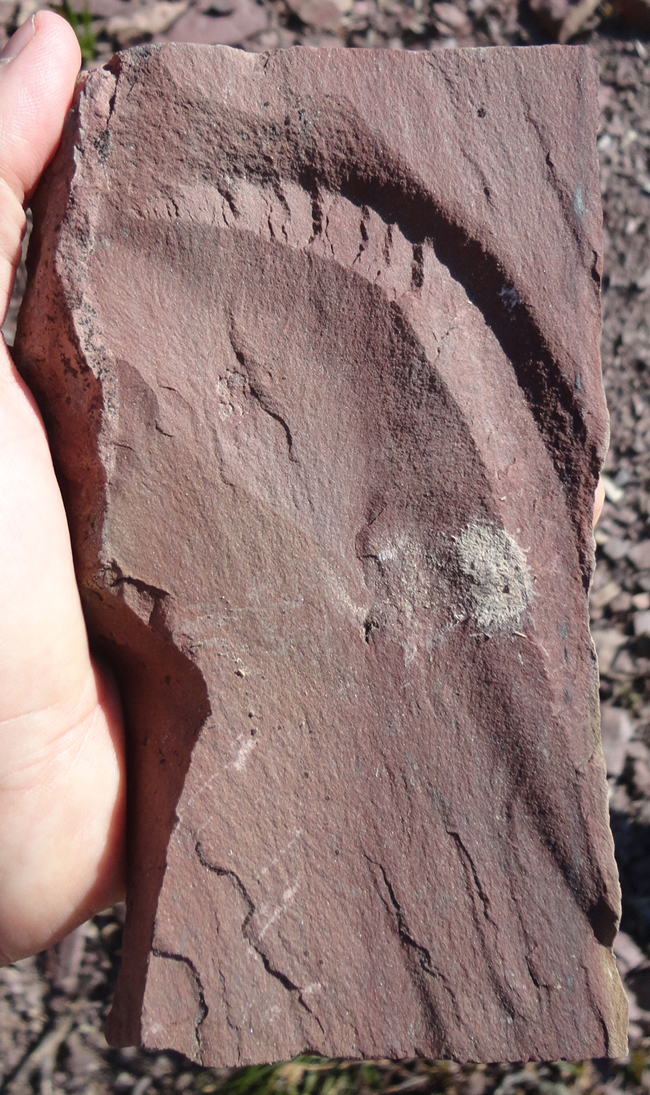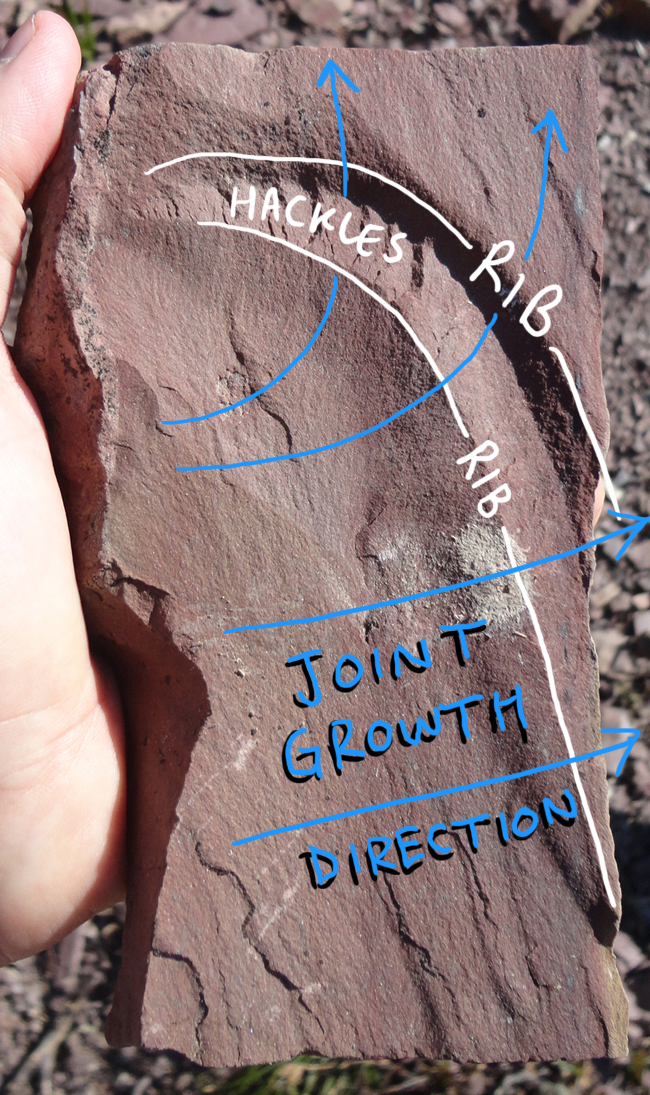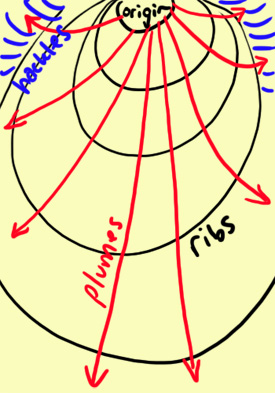Concentric ribs with hackles on a joint face, quartzite (metamorphosed fine-grained quartz sandstone stained with hematite) from Waterton Lakes National Park, southern Alberta.

Concentric ribs with hackles on a joint face, quartzite (metamorphosed fine-grained quartz sandstone stained with hematite) from Waterton Lakes National Park, southern Alberta.

So what caused that? Which is the ribs and which is hackles?
Hi Scott,

Sorry – there wasn’t much there in the way of explanation, was there? Here, maybe this will help:
As the fracture (“joint”) grew, it advanced from left to right across this rock. The ribs are the large curved features: they show where the propagating tip of the fracture paused and “tipped out” for a moment before proceeding. The hackles are the ruffley things at the top – they indicate this joint was opening (dilating) as it formed: they are essentially little small joints that fringe the edge of the main joint, forming as a consequence of the changing stress field that their area of rock undergoes pre- and during- jointing.
Here are a few old posts that show some other examples of these features as well as plumose structure, another common “joint anatomy” feature.
Callan
What’s causing “ribs” to curve like that? differential strain? and what software did you use to label the photo?
The joint is an elliptical thing, generally two to three times as wide in one direction as it is 90 degrees to that. It starts small at a spot called an “origin” (often a slight mechanical weakness or irregularity), and then grows bigger.

Each pulse of growing results in a rib forming, while the plumes are parallel to the joint propagation direction. As they diverge, they show the growth of the joint. Hackles only form where the rock is being twisted – usually along the middle of the “sides” of the joint towards the back, tapering off as you get closer to the origin.
So: The ribs are curved because they show the outline of the the more-or-less elliptical joint face at an earlier stage in its growth.
I used Photoshop to annotate the photo, drawing on the screen with a Wacom Cintiq stylus (It’s the hardware that gives it the distinctive “handwritten” look, not the software.)
Interesting, Thanks !